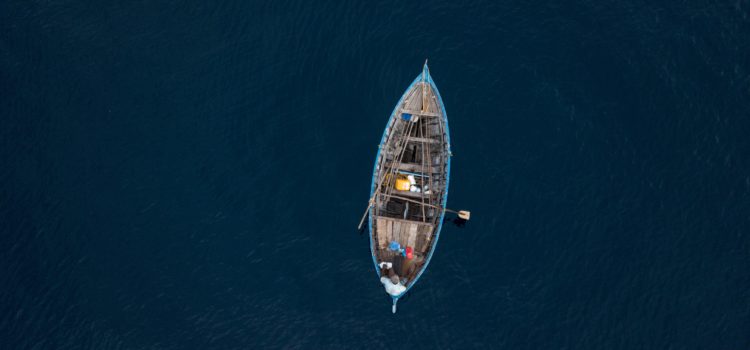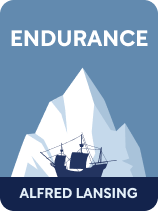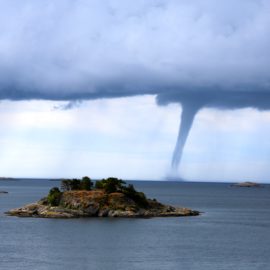

This article is an excerpt from the Shortform book guide to "Endurance" by Alfred Lansing. Shortform has the world's best summaries and analyses of books you should be reading.
Like this article? Sign up for a free trial here .
What do you need to know before learning about the Endurance shipwreck? Was Ernest Shackleton qualified to lead an Antarctic expedition?
In Endurance, Alfred Lansing recounts the unsuccessful Imperial Trans-Antarctic Expedition. But before getting into the details of the shipwreck, he gives a brief overview of other Antarctic expeditions that inspired Shackleton to conduct his own expedition.
Read below for a background of Shackleton’s Endurance expedition.
Background of Shackleton’s Endurance Expedition
The Imperial Trans-Antarctic Expedition was Shackleton’s third journey to the South Pole. Shackleton’s Endurance expedition was intended to be the first to cross the entire Antarctic continent by foot, and it was an opportunity for the British Empire to leave a lasting legacy in the exploration of Antarctica.
(Shortform note: Before the Imperial Trans-Antarctic Expedition, the most important British achievement in the exploration of the Antarctic was the British National Antarctic Expedition of 1901-04, which didn’t reach the South Pole but got farther south than any exploration before it. Famed explorer Robert Scott led the expedition and Shackleton participated as the third lieutenant.)
The Heroic Age of Antarctic Exploration
The Heroic Age of Antarctic Exploration refers to the period between 1898 and 1922. Although Lansing doesn’t use the term, he cites events during that time that inspired Shackleton to pursue his expedition.
The British had conducted several expeditions to Antarctica but had few noteworthy accomplishments. In 1912, a Norwegian explorer was the first to reach the South Pole, beating British explorer Robert Scott, who died racing against the Norwegian. After 1912, Ernest Shackleton believed the only remarkable journey left was to cross the entire continent on foot, rather than stopping halfway at the South Pole, and he believed the British empire had to accomplish it.
The Race to the South Pole
The Polar Race between Norwegian explorer Roald Amundsen and British explorer Robert Scott was actually never a race at all. Scott set out to be the first to reach the South Pole, but Amundsen originally planned to go to the North Pole. When his expedition was ready to leave Norway, he heard that an American explorer had just been the first to reach the North Pole, so he quickly changed his plans.
Amundsen reached the South Pole on December 14, 1911, and returned to Europe with mild weather (by polar standards). Scott reached Antarctica in early January 1912. The ship and most of the crew stayed at the shore. Amundsen led a team of five men to the Pole. They reached it on January 17, 1912, but became stranded by a blizzard as they returned to the ship. Scott and the five men joining him died of scurvy as they tried to find the rest of their crew that waited at their ship.
Shackleton’s Background
Lansing recounts that Shackleton had already been to Antarctica twice. However, he felt that this third expedition would secure his place as a great explorer.
His previous expeditions to the South Pole had contributed to his reputation as an explorer. First, he was part of another explorer’s crew that managed to get deeper into the continent than anyone had before. His second expedition to the Pole was his own, and it established his leadership in emergencies. He got within 100 miles of the Pole but turned back because of a food shortage. He managed to get his crew back to safety, and he came back to the United Kingdom as a hero.
(Shortform note: Shackleton’s seafaring career began at an early age. Although his father, a doctor, wanted him to study medicine, Shackleton didn’t have scholarly inclinations and instead enrolled in the Merchant Navy at age 16. He quickly moved up the ranks, and by age 24 he could command any British ship in the world. Just two years later, in 1900, he was the third lieutenant on his first expedition to Antarctica, the British National Antarctic Expedition.)
The Goal of Shackleton’s Endurance Expedition
As Shackleton’s idea began to take shape in early 1914, some said it was too ambitious, but Lansing argues that it was in line with his style and self-confidence. His plan involved taking two ships: one with food stores that it would leave at outposts along the continent’s edge, and the other with a crew that would land on Antarctica’s northern tip and walk to the opposite end of the continent. This crew would take sledges and dogs and rely on the food stores left by the other ship’s crew.
(Shortform note: A factor that made Shackleton’s plan particularly ambitious was that, until that point, only 10 people had ever made it to the South Pole—and of those, five died making their way back. No one, of course, had traversed it.)

———End of Preview———
Like what you just read? Read the rest of the world's best book summary and analysis of Alfred Lansing's "Endurance" at Shortform .
Here's what you'll find in our full Endurance summary :
- The story of the Endurance, an expedition ship that sunk on its way to Antarctica
- The crew's journey of survival and their search for rescue
- How Ernest Shackleton lead the crew to safety






